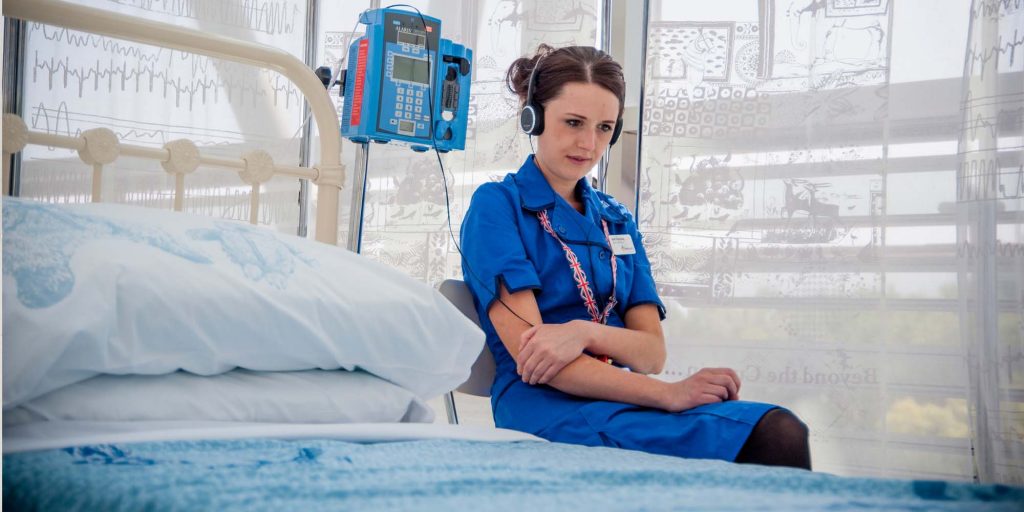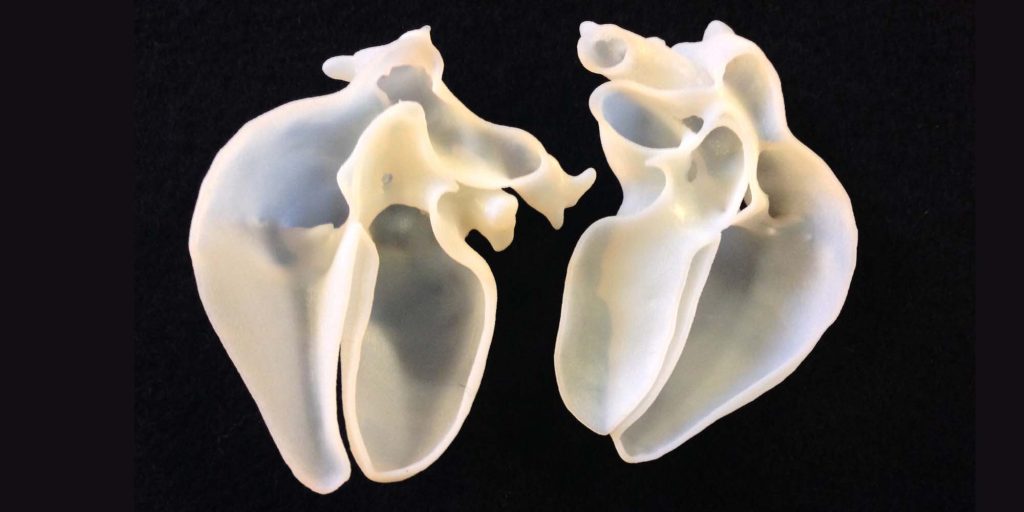A multi-media art installation consisting of 3D printed heart models and medical soundscapes will be displayed at the Bristol Biomedical Research Centre (BRC) of National Institute for Health Research (NIHR), to mark its opening on 1 February.
The installation, Under the Microscope: Making the Invisible Visible by artist Sofie Layton explores the nature of congenital heart disease and symbolizes the advanced research that will take place at the £21 million ($30 million) Bristol BRC.

Making the Invisible Visible
The art installation was originally created by Sofie Layton during her residency at Great Ormond Street Hospital for children, with the help of cardiologist Dr. Giovanni Biglino and sound artist Jules Maxwell.
It consists of 3D-printed models of hearts with congenital heart disease, exploring, in the words of Layton, the “complexities of illness and disease connected to the heart.”
The installation’s 3D printed hearts were inspired by actual medical models created from MRI scans, which doctors use to explain heart conditions to children.
The installation is accompanied by a recording of a mother narrating the experience of her child’s heart transplant overlaid with medical language and MRI sounds, to emphasize the role of MRI in patient care and imaging. MRI has been used to create 3D printed surgical models in the UK and urgent surgical planning models in Russia.
To produce her art piece, Layton also worked with parents and patients on the cardiac ward, including children supported with a “Berlin Heart” (an air-driven pump which takes over the work of one or both sides of the child’s own heart) who were waiting to receive a heart transplant.

3D printing at the Bristol NIHR
The NIHR, which has the motto “improving the health and wealth of the nation through research,” conducts studies, provides research facilities, and trains NHS staff.
Researchers at other NIHR centers have previously used 3D printing to prepare for surgery. One study at the NIHR BRC at The Royal Marsden Hospital in London used 3D printed replica models of tumors and organs to measure the effectiveness of radiotherapy treatments.
The Bristol BRC is to include facilities for tissue engineering, and it will build upon existing cardiovascular research in Bristol (including 3D printed hearts), which suggests that the institution will be investing in both 3D printers and bioprinters.
Tell us about your favorite 3D printing application. Make your nominations for the 3D Printing Industry Awards 2018 now.
For more stories on medical applications of 3D printing. For more stories on 3D printing and medical modeling, subscribe to our free 3D Printing Industry newsletter, follow us on Twitter, and like us on Facebook.
Featured image shows 3D printed hearts in the “Under the Microscope: Making the Invisible Visible” installation by Sofie Layton. Photo via Sofie Layton.

